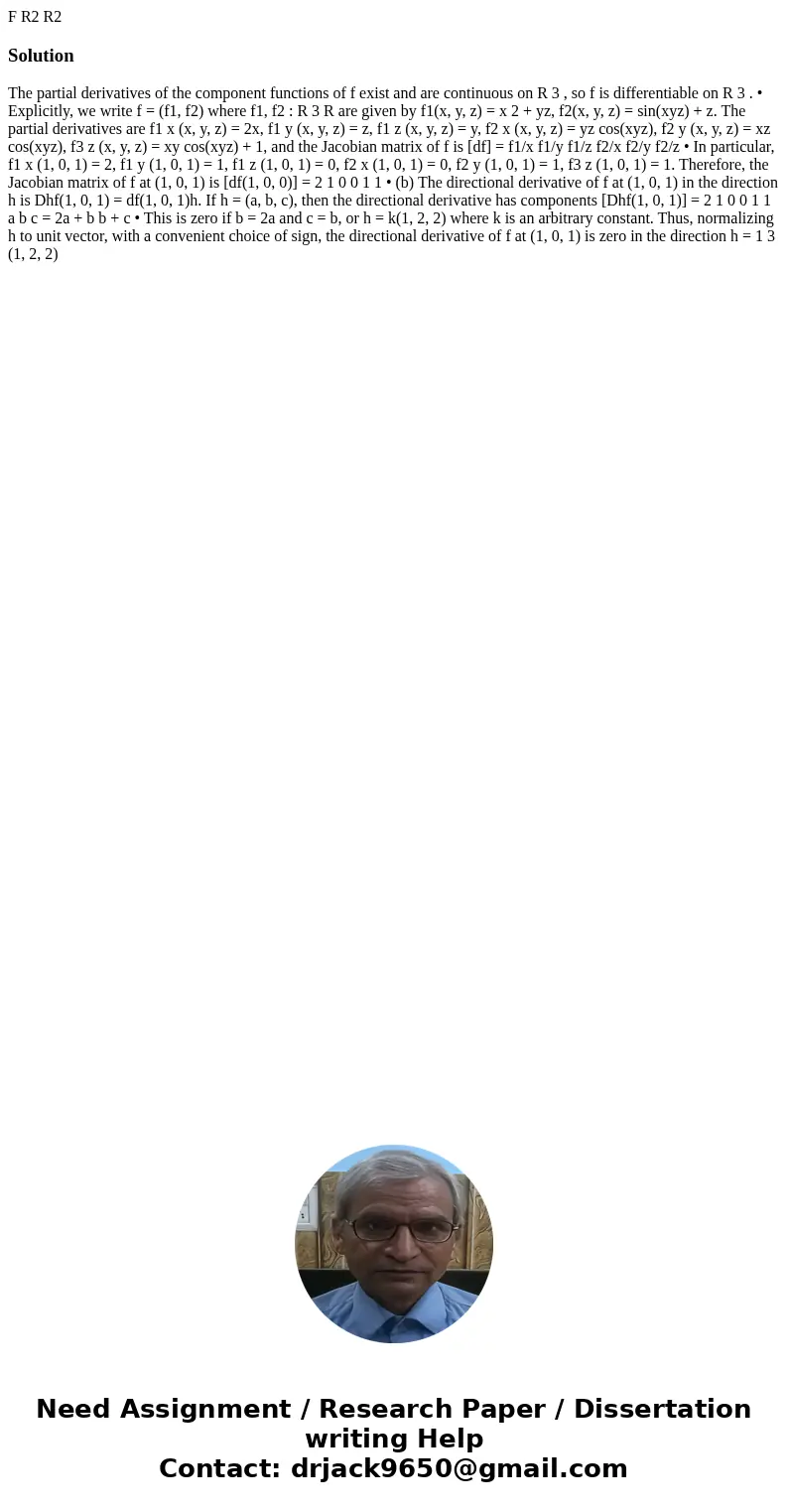F R2 R2 SolutionThe partial derivatives of the component fun
Solution
The partial derivatives of the component functions of f exist and are continuous on R 3 , so f is differentiable on R 3 . • Explicitly, we write f = (f1, f2) where f1, f2 : R 3 R are given by f1(x, y, z) = x 2 + yz, f2(x, y, z) = sin(xyz) + z. The partial derivatives are f1 x (x, y, z) = 2x, f1 y (x, y, z) = z, f1 z (x, y, z) = y, f2 x (x, y, z) = yz cos(xyz), f2 y (x, y, z) = xz cos(xyz), f3 z (x, y, z) = xy cos(xyz) + 1, and the Jacobian matrix of f is [df] = f1/x f1/y f1/z f2/x f2/y f2/z • In particular, f1 x (1, 0, 1) = 2, f1 y (1, 0, 1) = 1, f1 z (1, 0, 1) = 0, f2 x (1, 0, 1) = 0, f2 y (1, 0, 1) = 1, f3 z (1, 0, 1) = 1. Therefore, the Jacobian matrix of f at (1, 0, 1) is [df(1, 0, 0)] = 2 1 0 0 1 1 • (b) The directional derivative of f at (1, 0, 1) in the direction h is Dhf(1, 0, 1) = df(1, 0, 1)h. If h = (a, b, c), then the directional derivative has components [Dhf(1, 0, 1)] = 2 1 0 0 1 1 a b c = 2a + b b + c • This is zero if b = 2a and c = b, or h = k(1, 2, 2) where k is an arbitrary constant. Thus, normalizing h to unit vector, with a convenient choice of sign, the directional derivative of f at (1, 0, 1) is zero in the direction h = 1 3 (1, 2, 2)

 Homework Sourse
Homework Sourse